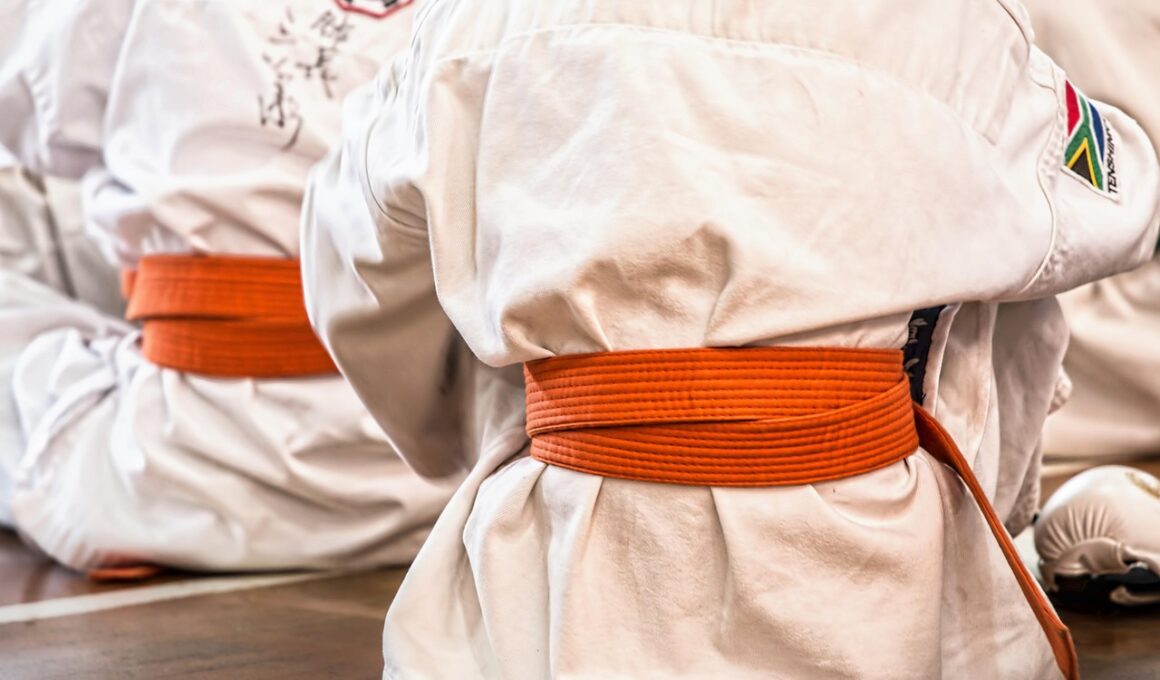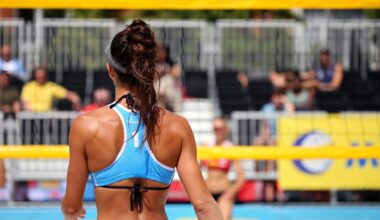Flexibility Challenges in Martial Arts and How to Overcome Them
Flexibility is critical in martial arts, where precise movements and techniques define success. However, many martial artists face several challenges that hinder their flexibility training. One primary issue is the lack of consistent practice. It is essential for practitioners to dedicate time to stretching and various exercises regularly. Without this, individuals often experience limited range of motion, which can affect performance drastically. Another common challenge involves fatigue; intense training sessions can leave muscles tight and sore, making flexibility training feel daunting. The key is to find a balance between strength and flexibility routines. Overcoming these obstacles requires adopting a well-structured training regimen. Additionally, it’s vital to listen to one’s body, ensuring that any discomfort is managed correctly to prevent injury while still allowing improvement. Setting tangible goals, such as increasing one’s split or achieving a higher kick, can also boost motivation. Ultimately, flexibility training must become a priority, integrating various techniques into regular martial arts practice to yield effective results and enhance overall performance.
One critical aspect of flexibility training is understanding the different types of stretches. Generally, they can be classified into static, dynamic, and ballistic stretching. Static stretching involves holding a stretch for a prolonged period, beneficial for improving flexibility over time. Dynamic stretching, on the other hand, incorporates movement and is often used as a warm-up to prepare the muscles for rigorous activities. This method engages muscles through their full range of motion, which is crucial for martial arts. Finally, ballistic stretching involves bouncing movements that can increase flexibility quickly but also carry a higher risk of injury. For martial artists, focusing on static and dynamic stretches usually provides a solid foundation. By mixing these methods into their routine, martial artists can effectively work on their flexibility while minimizing injury risks. Moreover, incorporating yoga or Pilates into training can greatly enhance flexibility. Participants should aim to blend various stretching methods, utilize proper techniques, and monitor progress consistently. This integrated approach allows martial artists to develop essential flexibility, which significantly affects their techniques and overall performance.
The Importance of Warm-ups and Cool-downs
Warming up is a vital component of any training regimen, particularly for flexibility in martial arts. Engaging in warm-ups prepares the muscles and joints, increasing blood flow and reducing the risk of injury. A well-structured warm-up routine typically includes a combination of light cardio and dynamic stretches tailored to the specific workout. This preparation not only enhances flexibility during training but also improves overall performance, allowing martial artists to execute techniques with precision and vigor. Post-training cool-downs are equally important, often overlooked by many. This phase includes static stretching, which helps relax the muscles and improve flexibility by elongating fibers after workouts. Additionally, cool-downs aid in the recovery process, reducing soreness after intense training sessions. Implementing both warm-up and cool-down routines should be mandatory in any martial artist’s schedule. Practitioners need to prioritize these segments within their training for optimal flexibility development and injury prevention. Consistently applying these routines facilitates better overall efficiency in martial arts, leading to improved performance and achievement of long-term flexibility goals.
Nutrition greatly influences one’s ability to maintain flexibility and enhance performance in martial arts. Consuming a balanced diet rich in nutrients supports muscle recovery and promotes overall health. Adequate hydration is equally important; water helps maintain flexibility in muscles and joints, assisting in their elasticity. Including foods high in omega-3 fatty acids, such as fish, can help reduce inflammation and soreness, aiding in better flexibility training and recovery. Additionally, protein-rich foods are essential for muscle repair, which is especially crucial after intense training sessions. Healthy fats, such as avocados and nuts, contribute to joint health and smooth functioning. Practitioners should aim to create a balanced meal plan that encompasses lean proteins, healthy fats, and plenty of fruits and vegetables. Another beneficial factor to consider is supplementing with vitamins, particularly vitamin D and calcium, which are vital for bone health. Martial artists who prioritize nutrition can notice vast improvements in their flexibility training and overall performance. Ultimately, adhering to a balanced diet supports training goals and helps prevent injuries that could hinder flexibility progress.
Finding the Right Resources and Guidance
Choosing the proper resources or guidance is crucial for martial artists aiming to improve their flexibility. Local classes, online forums, and instructional videos can provide excellent insights and techniques for effective stretching routines. Some practitioners opt for professional coaching or physical therapy, which can tailor flexibility training specific to individual needs. Personal trainers often assist in developing personalized stretching regimes tailored to reach specific flexibility goals based on age, fitness levels, and martial arts styles. Additionally, martial arts academies frequently offer specialized classes focusing solely on flexibility. Engaging with other practitioners can create a supportive environment, facilitating motivation and sharing techniques. Joining an online community or using apps designed for flexibility training can be resourceful for accountability and mentorship. Utilizing technology, such as video analysis, can help martial artists improve their technique while working on flexibility. The combination of personalized instruction and community support can significantly enhance one’s flexibility journey. Overall, being proactive in seeking quality resources can yield substantial benefits for martial artists seeking to overcome flexibility challenges.
Incorporating mindfulness as a core element in flexibility training can produce profound benefits for martial artists. Mindfulness encourages greater awareness and concentration during stretching routines. Focusing on breath control helps alleviate tension and promote relaxation, which is vital for stretching effectively. By integrating mindfulness practices, martial artists can forge a deeper connection between the body and mind. This improved awareness encourages more precise movements and allows for better execution of flexibility techniques. Visualization techniques can also be beneficial; imagining oneself successfully achieving specific flexibility goals enhances motivation and commitment. Practicing mindfulness meditation outside of flexibility training can further reinforce this awareness, contributing to overall performance improvement in martial arts. Mindfulness creates a harmonious relationship, allowing practitioners to listen to their bodies and respond appropriately to discomfort or tension during stretches. As martial artists grow in flexibility, integrating mindfulness can support emotional resilience and enhance focus during practice. By incorporating these mindfulness practices, martial artists can foster both mental and physical growth. In the long run, this holistic approach nurtures flexibility and enhances overall martial arts performance.
Staying Consistent and Motivated
Staying consistent with flexibility training is essential for progress and overcoming challenges in martial arts. One helpful strategy is to set personal, achievable goals that encourage daily practice. Breaking larger goals into smaller milestones can boost motivation and provide a tangible sense of accomplishment. Maintaining a training journal can also be a beneficial practice; documenting progress helps to visually track improvements and maintain focus on goals. Additionally, incorporating flexibility training within martial arts routines ensures it becomes a habitual practice. Seeking inspiration from fellow practitioners, local competitions, or online showcases can further motivate individuals to pursue growth in flexibility. Engaging in partner stretching with fellow martial artists can also create accountability while making training more enjoyable. Furthermore, celebrating successes, no matter how minor, can contribute to sustained motivation throughout the journey. Practitioners should remember that enhancing flexibility is a gradual process, demanding patience and persistence. Staying positive, mindful of progress, and adapting routines as necessary can yield immense improvements over time. Ultimately, a commitment to consistent training is the key to overcoming flexibility challenges in martial arts.


